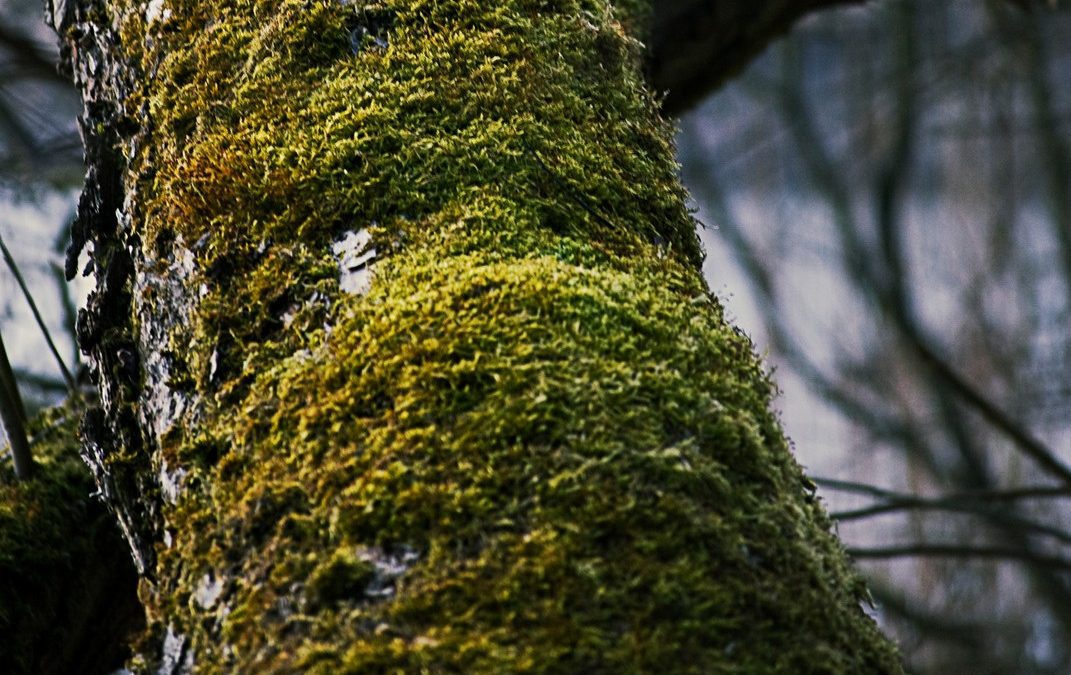Property owners love their trees and want to protect them from any threats out in the environment. So, it’s no surprise that many people in the Bloomington area wonder about various growths they see on their trees.
Is moss a bad sign for the tree’s health? Is ivy okay to let spread over trees? What’s the deal with that pale greenish-gray growth called lichen, and is anything to be worried about? Thankfully, all these questions are pretty straightforward to answer.
Ivy — beautiful but deadly
In the Batman comic series, the hero deals with a character named Poison Ivy that was both attractive yet a threat. Think of ivy in the same way — and not just the poison variety. A lot of people like the look of English ivy growing up an old tree. They think it gives a stately, sophisticated look, and we don’t disagree with them. But there’s also some bad news about ivy.
Ivy and other vines, including English ivy, poison ivy, kudzu, Japanese honeysuckle and others, can damage a tree in multiple ways. They can create a groundcover at the base of the tree that traps moisture near the roots (which can cause rotting), they add weight to branches and the trunk so they are more likely to fall in a storm, they block sunlight from the tree, they bring insects, and they bring moisture to the trunk that invites mold and rot.
Lichen — harmless
Another common growth people find on trees, and then wonder about, is lichen. These pale-colored green or white growths are actually a hybrid of algae and fungus. The two organisms live in a symbiotic relationship, meaning they each contribute to a partnership that benefits both of them. If you identify lichen on your trees, it’s nothing to be alarmed at. They will not cause harm because they aren’t actually feeding on the tree for their sustenance — only using it as a surface to live on — so they aren’t creating any harmful side-effects like ivy does.
One thing to be aware of with lichen though, is it only grows on surfaces that are stationary for long periods (like rocks, trees, broken down cars). So young, fast-growing trees will tend not to have much if any lichen. If a tree is covered in lichen, this could be one sign that the tree is no longer healthy and hasn’t grown or shed bark in some time.
Moss — mostly okay
Like lichen, moss is more of a potential sign of problems than a cause of problems. Reasonable amounts of moss on trees that are adapted to the shade and moisture is nothing to be alarmed at. If a tree is of a variety that should be getting a lot of sunlight and is susceptible to rotting from excess moisture, then moss could be a sign of danger.
Moss, a fuzzy green growth, enjoys finding places high up that can receive sunlight and moisture. This can be a sign that the tree is weakening because the lack of leaves allows the moss to move in. The one main concern is if moss moves in on a weak tree with dying limbs, those limbs could get over-burdened and become more likely to fall.
Anthony’s Tree Service knows ivy, moss and lichen
It’s not always straightforward to identify which of these greenish growths are on your tree, whether they are present in a safe amount, and what their presence means for the health of your tree. It is also not clear what the best course of action is when you answer those questions. But Anthony’s in Bloomington, Indiana, is the area’s expert on tree care and can take the guesswork out of the situation for you. Call us at (812) 345-5694 today.


Recent Comments